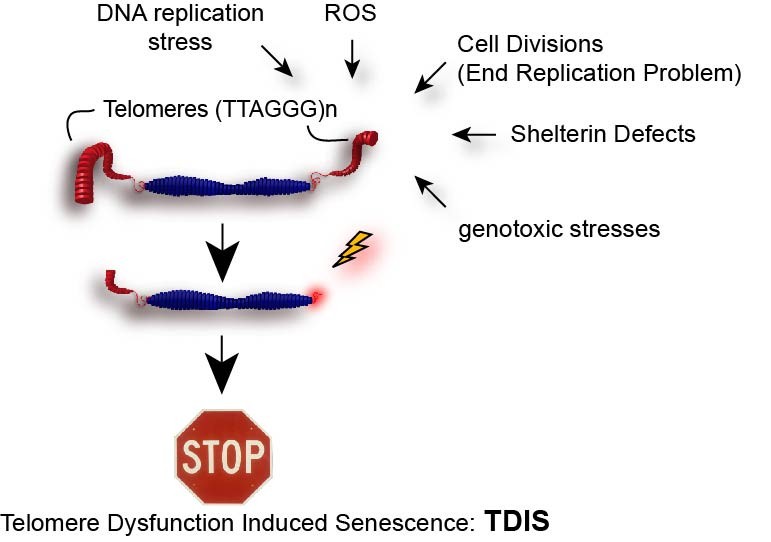telomeres dysfunctional induced senesence TDIS
Causes of Telomere Shortening and Dysfunction

For many years it was thought that telomere erosion and dysfunction was primarily a consequence of the “end replication problem”, the inability of the replicative polymerase to completely duplicate linear chromosomes. Our work, and that of others, recently changed this dogma. We contributed to a study demonstrating that double stranded DNA breaks (DSBs), induced by drugs, endonucleases, or ionizing radiation, are, in fact, irreparable. As a consequence of genotoxic stresses that also cause telomeric DSBs, telomeres become dysfunctional and rapidly trigger TDIS (Fumagalli et al., 2012. Nature Cell Biol). In addition, we demonstrated that telomere dysfunction observed in tissue culture, as well as in tumor tissue, is primarily a result of telomeric DNA replication stresses triggered by BRCA2 deletion (Badie et al., 2010, Nature Struct Mol Biol), drugs, oncogene expression (Suram et al., 2012. EMBO J), inactivation of the telomere specific DNA replication factor hStn1, or elevating the levels of reactive oxygen species (Boccardi et al., 2015. Aging Cell,). Our data therefore uncovered a novel and unexpected function of telomeres acting as a molecular trigger of cellular senescence in response to a large number of stresses that place a cell at risk for malignant transformation. We are continuing to explore the causes for and mechanisms involved in telomere shortening, telomere attrition, and telomere dysfunction in human cells.
